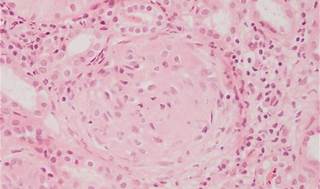A mother brings her 2-month-old to the well-baby clinic.
She mentions that when she kisses her baby, the infant’s skin tastes salty.
What standard diagnostic test should the nurse prepare the mother for to screen for cystic fibrosis (CF)?
Fecal-fat test.
Sweat-chloride test.
Pulmonary-function test.
Potassium chloride test.
The Correct Answer is B
Choice A rationale
A fecal-fat test is used to measure the body’s ability to break down and absorb fat. It is not a standard diagnostic test for cystic fibrosis (CF)6.
Choice B rationale
A sweat-chloride test is the standard diagnostic test for CF. People with CF have higher than normal levels of sodium and chloride in their sweat, which can make their skin taste salty.
Choice C rationale
A pulmonary-function test measures how well the lungs work and can be used to monitor lung disease in people with CF. However, it is not a standard diagnostic test for CF, especially in a 2- month-old infant.
Choice D rationale
A potassium chloride test is not a standard diagnostic test for CF6.
Nursing Test Bank
Naxlex Comprehensive Predictor Exams
Related Questions
Correct Answer is D
Explanation

The correct answer is choice d. Positive rapid strep test of the oropharynx.
Choice A rationale:
Blood pressure of 88/50 mmHg is lower than normal but not typically associated with acute glomerulonephritis. High blood pressure is more common in this condition.
Choice B rationale:
Weight loss is not a typical symptom of acute glomerulonephritis. Instead, fluid retention and weight gain are more common due to edema.
Choice C rationale:
A maculopapular rash over the trunk is not commonly associated with acute glomerulonephritis. This condition usually presents with symptoms like hematuria, proteinuria, and edema.
Choice D rationale:
A positive rapid strep test of the oropharynx indicates a recent streptococcal infection, which is a common cause of acute glomerulonephritis. Reporting this finding is crucial for appropriate management.
Correct Answer is B
Explanation
Choice A rationale
While infant formula is a common feeding option, it does not enhance the absorption of iron. In fact, iron is better absorbed when taken with vitamin C, which is abundant in orange juice.
Choice B rationale
The mother is correctly administering the iron drops. Giving iron with orange juice can enhance iron absorption due to the vitamin C content.
Choice C rationale
Mixing the iron drops in the orange juice is not necessary and could potentially alter the taste of the juice.
Choice D rationale
There is no need to refrain from feeding the infant for 30 minutes after giving the iron drops.
Whether you are a student looking to ace your exams or a practicing nurse seeking to enhance your expertise , our nursing education contents will empower you with the confidence and competence to make a difference in the lives of patients and become a respected leader in the healthcare field.
Visit Naxlex, invest in your future and unlock endless possibilities with our unparalleled nursing education contents today
Report Wrong Answer on the Current Question
Do you disagree with the answer? If yes, what is your expected answer? Explain.
Kindly be descriptive with the issue you are facing.
